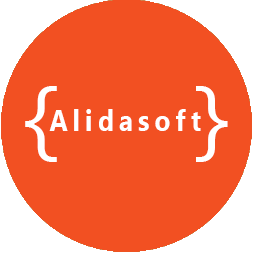Well-Architected Framework - Alidasoft
Currently 42% of UK businesses use cloud computing to drive growth, increase performance and reduce costs.
But it’s no longer enough to simply move your workloads into the cloud and leave them there.
To ensure you’re getting the most from your cloud infrastructure, it’s necessary to tailor your cloud infrastructure to suit your business needs.
The AWS well-architected framework is a powerful way to get the most from your AWS cloud infrastructure.
From performance to cost and security, the well-architected review can help to cut costs, speed up processes, facilitate business-driven innovation and save engineering time.
The AWS well-architected framework covers six pillars aimed at improving your cloud environment and reducing downtime and poor performance.
The six AWS well-architected pillars are:
- Operational Excellence
- Security
- Reliability
- Performance Efficiency
- Cost Optimisation
- Sustainability
Let’s explore each one of these pillars more in-depth and see how they can benefit your business.
1- Operational Excellence
Your cloud infrastructure should accelerate your business growth by allowing you to perform operations as code and automate procedures.
This will enable you to streamline your business and technical process and delve into business insights to identify room for operational growth.
This is achieved by adding incremental changes, testing small, learning from failures, requiring procedures and improving education.
2- Security
It’s vital to ensure your systems, information and assets are secure and protected.
Unfortunately, 43% of businesses suffer data breaches and many of these data breaches could be prevented if the best security practices are implemented.
Regulators and governments are becoming more strict in regards to the data of customers, hence data breaches are becoming more costly both financially and reputationally.
The AWS well-architected framework delivers strong security improvements and ensures that your workloads and data are kept secure and safe.
The well-architected AWS framework:
- Enables complete traceability allowing you to view logs, keep an eye on your data and monitor threats.
- Encourages you to classify, label and action your sensitive data.
- Identity Access Management (IAM) ensures employees only have access to the information they need decreasing the likelihood of data leaks or unauthorised access to sensitive data.
- Automate code-based security mechanisms and controls.
3- Reliability
With the AWS well-architected, your business will become more resistant to disruption and your team better prepared for unexpected downtime.
Cloud failures and IT downtime are costly.
The average cost per hour of downtime to an enterprise is £521, 000 $ add link
The implementation of these five principles:
- Manage change in automation
- Automate recoveries
- Scale horizontally to increase system availability
- Test procedures for recovery
- End guessing capacity
By following these best practices you will ensure high levels of business continuity and productivity.
4- Performance Efficiency
The well-architected AWS framework uses five design principles to drive your cloud performance and reduce unnecessary overspending and inefficiencies.
- Go global, fast – Enables the deployment of applications globally in just a few clicks.
- Democratise technologies – Make advanced and evolving technologies accessible to everyone.
- Experiment more – Embrace change and innovation.
- Mechanical sympathy – Understand the tools that you use and how to make the most of them.
- Use serverless architecture -With the cloud, you don’t have to manage dedicated on-site servers.
With quicker deployment, no server management, no server management and more experimentation, you can innovate faster.
5- Cost Optimisation
The AWS well-architected framework optimises costs by:
- Reducing infrastructure management costs
- Right-sizing virtual instances to your actual usage levels, means you only pay for the computing capacity you need
- Track your usage
- Analyse your workload performance
6- Cloud Sustainability
It is the process of applying design principles and best practices to reduce environmental impact.
Environmental sustainability within AWS is a shared responsibility between customers and AWS.
AWS is responsible for optimising the sustainability of its cloud infrastructure – delivering efficiency, shared infrastructure, water stewardship and sourcing renewable power.
Customers are responsible for sustainability within their cloud environments – optimising workloads and the utilisation of resources and minimising the total resources required to be deployed for workloads.

